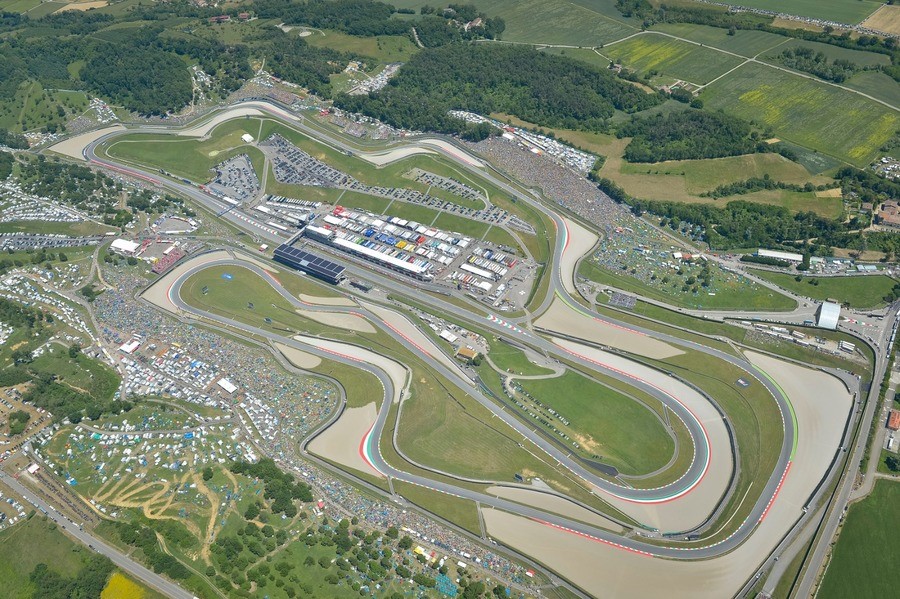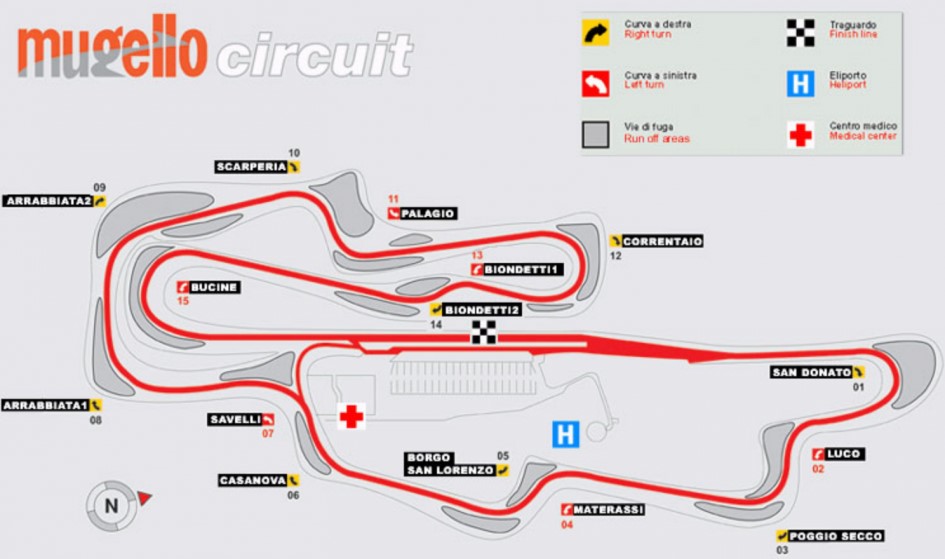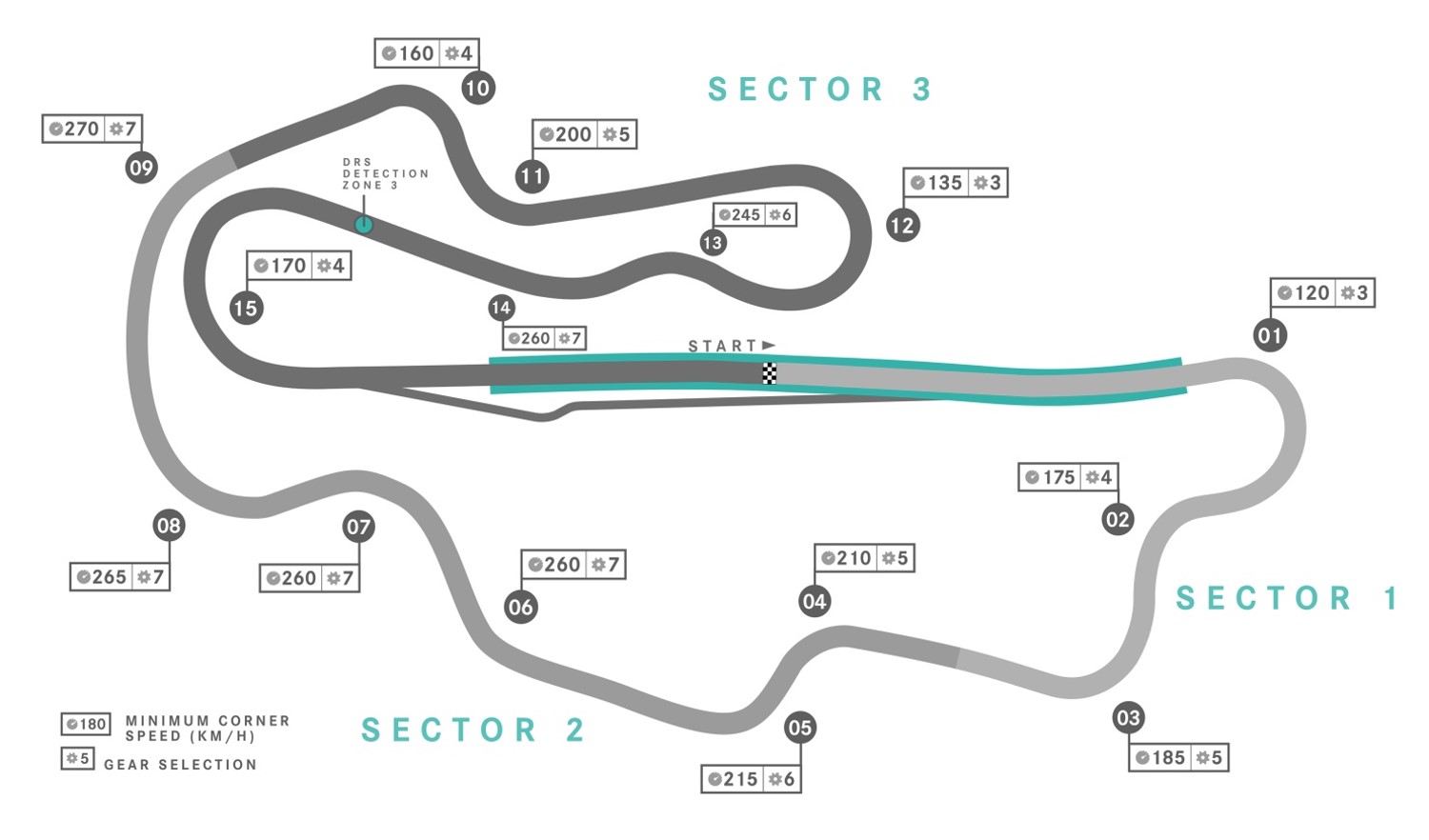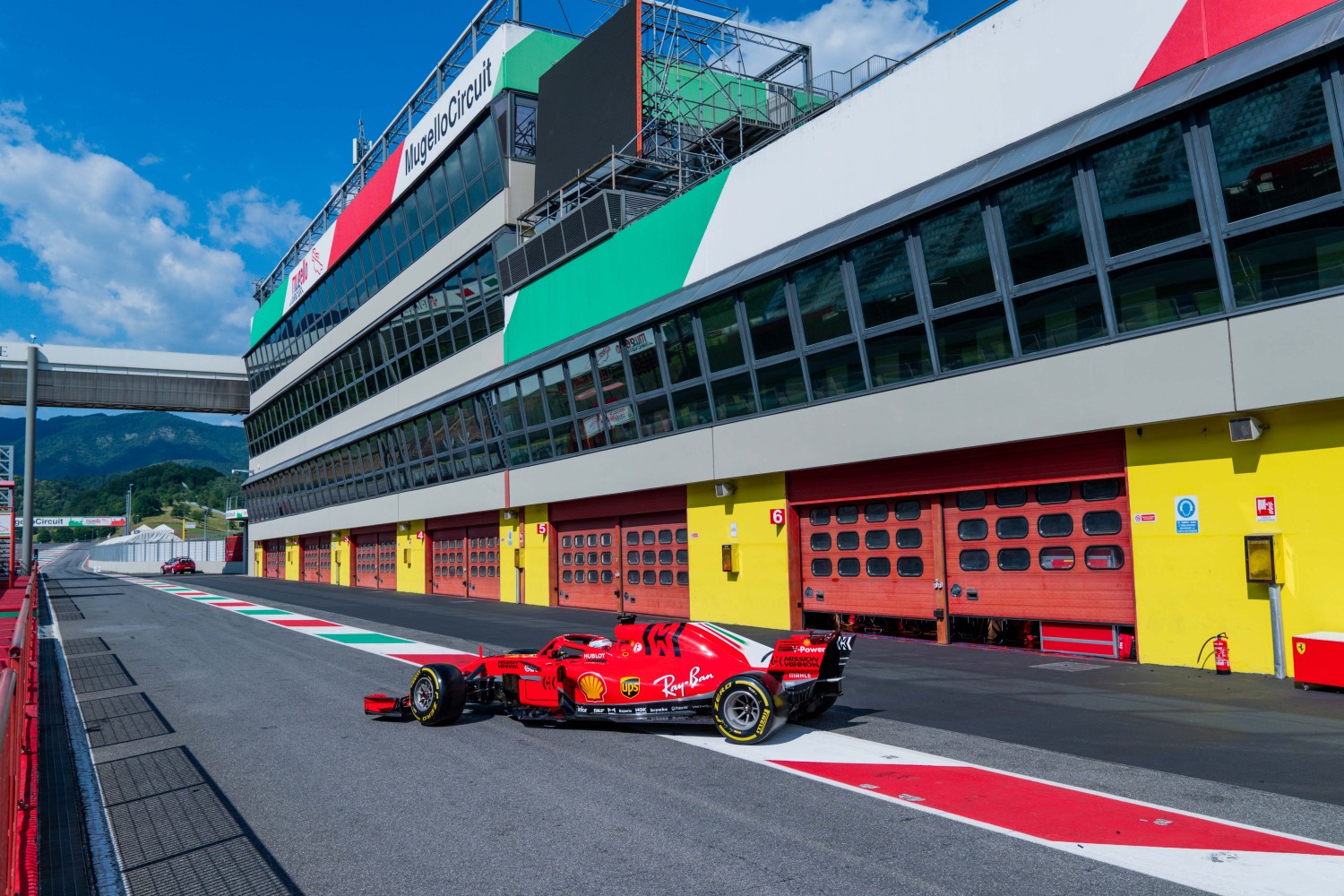F1 Tuscan GP at Mugello Preview
The F1 teams make their way south to the beautiful Tuscan countryside and home to one of the world’s finest circuits, Mugello, for the final F1 race of this triple header.
This coming weekend is the third Formula One World Championship round in as many weeks, the second in succession in Italy, but the first in history that will take place at the Mugello Circuit.
Road racing has taken place in the region for a century and in 1974 a specially designed circuit was opened in Mugello, located in the Tuscan hills, within reach of the historic city of Florence.
The 14-turn 5.245km circuit is famed for its medium and high-speed corners – and lengthy pit straight – that winds its way around the stunning Tuscan countryside, and for several decades it has been the scene of many famous moments in the MotoGP World Championship.

But for the first time in its history it will host a Formula One grand prix and become the fourth Italian venue to welcome the sport, joining Monza, Imola and Pescara on an exclusive list. It will be the 99th time a World Championship event has been held on Italian soil – more than any country in history. It will also be a celebration of 1000 Formula One events for Ferrari.
The Tuscan Grand Prix will also mark a welcome return to spectators – albeit in limited capacity. After eight events with zero fans there will be up to 2,880 trackside fans each day at Mugello.
The Tuscan Grand Prix will take place across September 11 to 13, with two 90-minute practice sessions on Friday, final practice and a three-part qualifying hour on Saturday, the results of which set the grid for Sunday’s 59-lap grand prix. Lights out is due for 15:10 local time (09:10 EST/14:10 BST).

The race at Mugello, the ‘Formula 1 Gran Premio Della Toscana Ferrari 1000’ is named as a celebration of Ferrari’s 1000th Grand Prix. Haas F1 Team has obviously enjoyed a working relationship with Ferrari since its inception. Haas team boss Guenther Steiner was asked his thoughts please on Ferrari’s impact in Formula One and specifically with the growth and development of Haas F1 Team.
“Formula One without Ferrari would only be half of Formula One – that’s what we have to be honest about. They’ve been there since almost the beginning, and they’re just such a big part of what Formula One is now. Honestly, without Ferrari we wouldn’t be here either. In the beginning when we tried to find a different way to do it, they were listening to us and entertaining us. We then found a solution where we could enter Formula One. Entering Formula One without a partner, starting from nothing, it’s almost impossible – I’m not saying impossible, there’s always someone that can do the impossible. Put simply though, without them, we wouldn’t be here. Our relationship with Ferrari was always very good, and it’s continued to improve with time.”
Back in 2012 Haas F1 driver Romain Grosjean participated in a mid-season Formula One test at Mugello – setting the fastest time of 1:21.035 in his Lotus-Renault. He was asked what he remembers of the track in terms of the layout, the challenges, and how fast he thinks the 2020 Formula One cars will go there?
“The layout is absolutely outstanding. The region, first of all, it’s beautiful, and then the track is built in such a way that you go up and then down a little bit. It’s very fast, there aren’t any low speed corners. There’s mid-to- high speed corners, a very long straight line. The two Arrabbiatta corners are absolutely outstanding. I think with the 2020 cars it’s just going to be bloody awesome.”
Can they pass at Mugello?
Mugello is a name that evokes memories: motorcycle races, long days of testing, first days – or only days – in the car for hopeful youngsters. This circuit is one all the teams know, it’s part of the sport’s collective psyche. But none of those memories is of Formula One cars racing each other: and it may well be, as the Tuscan circuit has never been put to that use until this week, when it will host its first Grand Prix.

Set in the hills just north of Florence – a lovely part of the world, if you ask us – Mugello Circuit features many medium- and high-speed corners that will provide a challenge to the drivers. A long home straight and elevation changes add to the layout, with some corners, like the two Arrabbiata blind right-handers, a particular highlight.
Very quickly the teams, drivers and fans will come to appreciate what a fantastic track it is. The fast sweeping corners and significant elevation changes will be hard on the tires and will demand significant downforce and grip. The single DRS zone may make overtaking a little difficult, but at 800m, it is one of the longest of the season and may be enough to allow drivers to get an advantage before braking for T1.
It will be incredibly physical for all the drivers out there with the extremely high speeds and a real neck-killer.
How do F1 teams prepare for a new race?
Most F1 teams last visited the Mugello circuit for a three-day test in May 2012. Since then, there were substantial changes to cars, engines and tires as well as smaller changes to the track. That’s why teams will treat Mugello as a completely new circuit. They will have a similar approach to the third race in Italy this year at Imola, as well as the races in Portugal, Turkey and Germany and the second Bahrain race.
The first step in the preparation process for a new race is purchasing highly accurate Lidar maps. Those 3D maps don’t just reflect general layout features like track width or cornering gradients, but also important details like the configuration of the curbs and details of the track surface. The maps are accurate enough to be used in the driver-in-loop (DiL) simulator where drivers find the optimal racing line around a lap. Both Lewis and Valtteri have driven the Mugello circuit in the team’s DiL simulator in Brackley.
The racing line obtained from the DiL then forms the basis of further simulation work in the automated simulator that the team uses to gain an understanding of the set-up direction of the car. Thanks to these highly accurate simulation tools, the engineers can do a lot of preparation work for a new circuit at the factory, allowing the track-side part of the operation to focus on tire and strategy work rather than having to concentrate on set-up alone.

In preparation of a race weekend at a track that F1 visits regularly, teams will look at data from previous years to learn from past experiences. However, this data has a certain expiration date. For example, one of the aspects that the team tries to understand before heading to a race is the specific energy management and the deployment maps which the track layout requires. That renders data from before the hybrid era obsolete in preparation of a new race.
From a driver’s perspective, coming to a new track is a bit different though. While drivers can use the simulator to learn the layout of a track, they tend to find more lap time on a new track than they usually find over the course of a race weekend, as they experiment with brake points, racing lines and cornering speeds.
Mugello features an unusual track layout with a number of very fast corners as well as a complete absence of slow ones – even the “slowest” corner (Turn 1) is expected to be taken at an apex speed of around 140 kph. Mugello’s many fast turns and its fairly old, abrasive tarmac bear some resemblance to Suzuka and engineers use the venue of the Japanese Grand Prix as a reference point for their predictions about tire life and degradation: both tracks generate a very high sliding energy and put a lot of stress on the tires.
The section from Turn 6 to Turn 9 will be particularly demanding on the tires. The four corners (the right-left combination of Casanova and Savelli followed by the two Arrabiata right-handers) are expected to be taken flat which will put very high loads on the tires. This also presents a challenge for the set-up of the car as teams will try and find a solution that deals with the high sliding energy.
The high-speed, twisty character of the track as well as its fairly narrow width will make overtaking tricky in Mugello, placing a particular importance on qualifying. The best point for overtaking is predicted to be at the end of the long straight going into the “slow” Turn 1.
Red safety car
The Tuscan Grand Prix makes its Formula One debut as the ninth race of the season, and Scuderia Ferrari will start their 1,000th race in the premier class of motorsport. In acknowledgment of this milestone, the Mercedes-AMG GT R Official FIA F1 Safety Car will be given a new look this weekend with a commemorative red livery. Everything else remains unchanged: with its powerful 4.0-liter V8 twin turbo engine, the Mercedes-AMG GT R driven by Bernd Maylander has a top speed of 318 km/h and takes 3.6 seconds to sprint from zero to 100 km/h. As it happens, the safety car is also celebrating an anniversary this year – the three-pointed star has adorned its grille in Formula One for a full 25 years.
“The Tuscan Grand Prix will also be the 1000th F1 race for Ferrari, marking the long racing tradition of this great Italian brand,” said Toto Wolff, CEO and Team Principal of the Mercedes-AMG Petronas F1 Team. “We will honor this achievement with a Mercedes-AMG Safety Car in Ferrari red – our nod to a racing history that brought us some of the greatest moments in Formula One. The men and women of Maranello have a proud history to celebrate, and we’re paying respect to those celebrations this weekend.”
